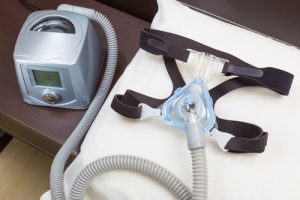Sleep apnea is a common sleep disorder that affects millions of people worldwide. Pauses characterize by breathing or shallow breaths during sleep, which can last from a few seconds to several minutes. The most common types of sleep apnea are obstructive sleep apnea (OSA) and central sleep apnea (CSA). 
OSA occurs when the muscles in the back of the throat fail to keep the airway open, despite the effort to breathe. This can result in partial or complete airway blockages, leading to breathing pauses. CSA, on the other hand, is caused by a failure of the brain to send proper signals to the muscles that control breathing. As a result, there is a temporary pause in breathing during sleep.
Common symptoms of sleep apnea include:
- Loud snoring.
- Frequent awakenings during the night.
- Difficulty falling asleep or staying asleep.
- Excessive daytime sleepiness.
People with sleep apnea may also experience headaches, mood swings, difficulty concentrating, and memory problems.
Diagnosis of sleep apnea involves a combination of a home sleep apnea test, a sleep study, a physical exam, and a medical history review. A home sleep apnea test is a convenient and non-invasive option that can be done in the comfort of your own home. During a sleep study, which is more comprehensive, a person is monitored overnight in a sleep center to assess their sleep patterns and breathing.
During a physical exam, your doctor will look for signs of sleep apnea, such as obesity, a large neck circumference, and a recessed chin. Your medical history will also be reviewed to determine if you have any risk factors for sleep apnea, such as a family history of the condition or a history of smoking.
Sleep apnea treatment options include lifestyle changes such as weight loss and sleeping on your side and medical treatments such as continuous positive airway pressure (CPAP) therapy. CPAP therapy involves wearing a mask over the nose or mouth during sleep, which delivers a steady flow of air to help keep the airway open.
In addition to CPAP therapy, lifestyle changes can also help manage sleep apnea. Weight loss, for example, can help reduce the pressure on the airway and improve breathing during sleep. Sleeping on your side can also help keep the airway open and prevent blockages. Avoiding alcohol and sedatives before bedtime can also help reduce the risk of sleep apnea, as these substances can relax the muscles in the airway and make it more likely to collapse.
It is important to seek treatment for sleep apnea as it can lead to serious health problems such as heart disease, depression, and decreased quality of life. In addition, people with untreated sleep apnea are also more likely to experience motor vehicle accidents due to excessive daytime sleepiness.
In conclusion, sleep apnea is a common sleep disorder that affects millions of people worldwide. If you suspect that you or someone you know may have sleep apnea, it is important to seek medical evaluation and treatment. People with sleep apnea can enjoy improved sleep quality and overall health with proper treatment and lifestyle changes.